- Home
- News
- General News
- Jay’s plumage opens...
Jay’s plumage opens path to everlasting colour
21-12-2015
Scientists from the University of Sheffield have used the ESRF’s X-rays to study the blue and white feathers of the Jay and have found that birds use well-controlled changes to the nanostructure of their feathers to create the vivid colours of their plumage. This research opens new possibilities for creating non-fading, synthetic colours for paints and clothing.
Share
Using X-ray scattering at the ESRF’s ID02 beamline, the researchers found that birds demonstrate a surprising level of control and sophistication in producing colours. They are able to pattern different colours along an individual feather barb – the equivalent to having many different colours along a single human hair.
Instead of pigments that would fade over time, birds use well-controlled changes to the nanostructure to create their vividly coloured feathers. It is thought that Jays use this feature to recognise one another.
The Jay’s feather, which goes from ultra violet in colour through to blue and into white, is made of a nanostructured spongy keratin material, the same that human hair and fingernails are made from.
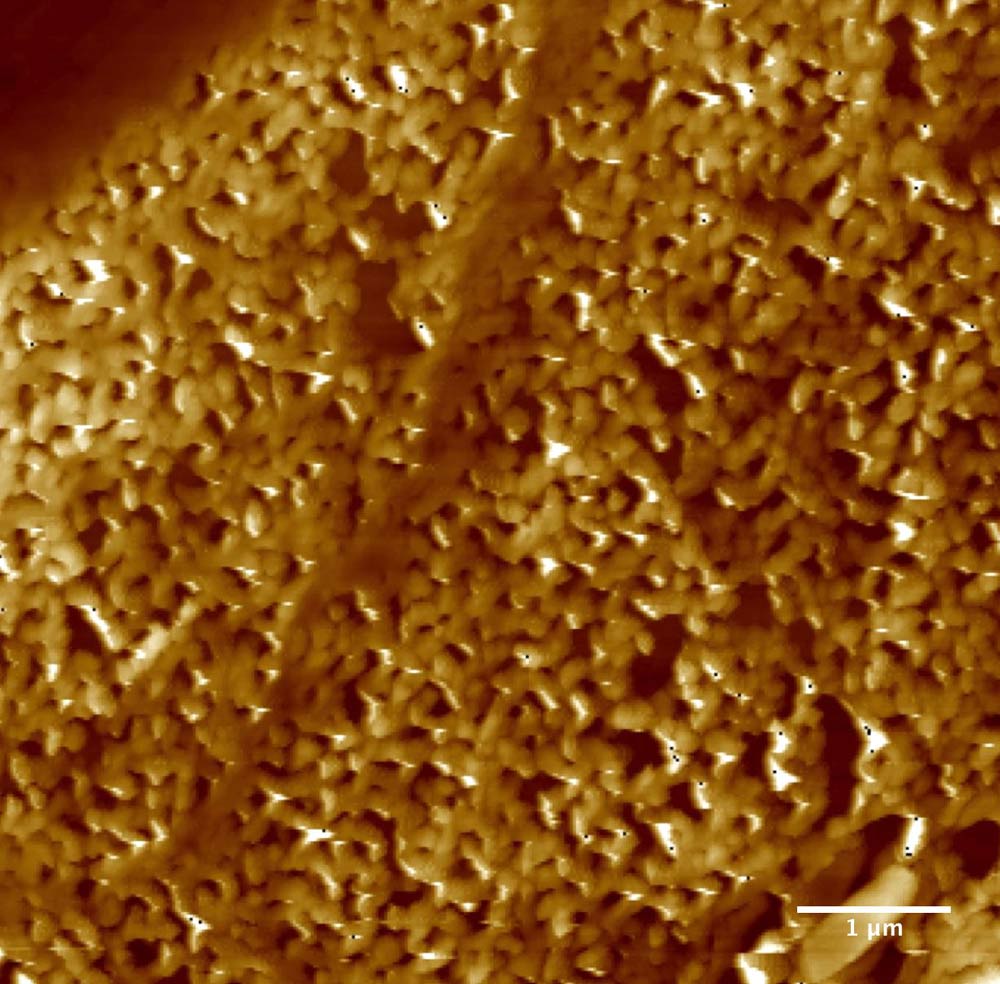 |
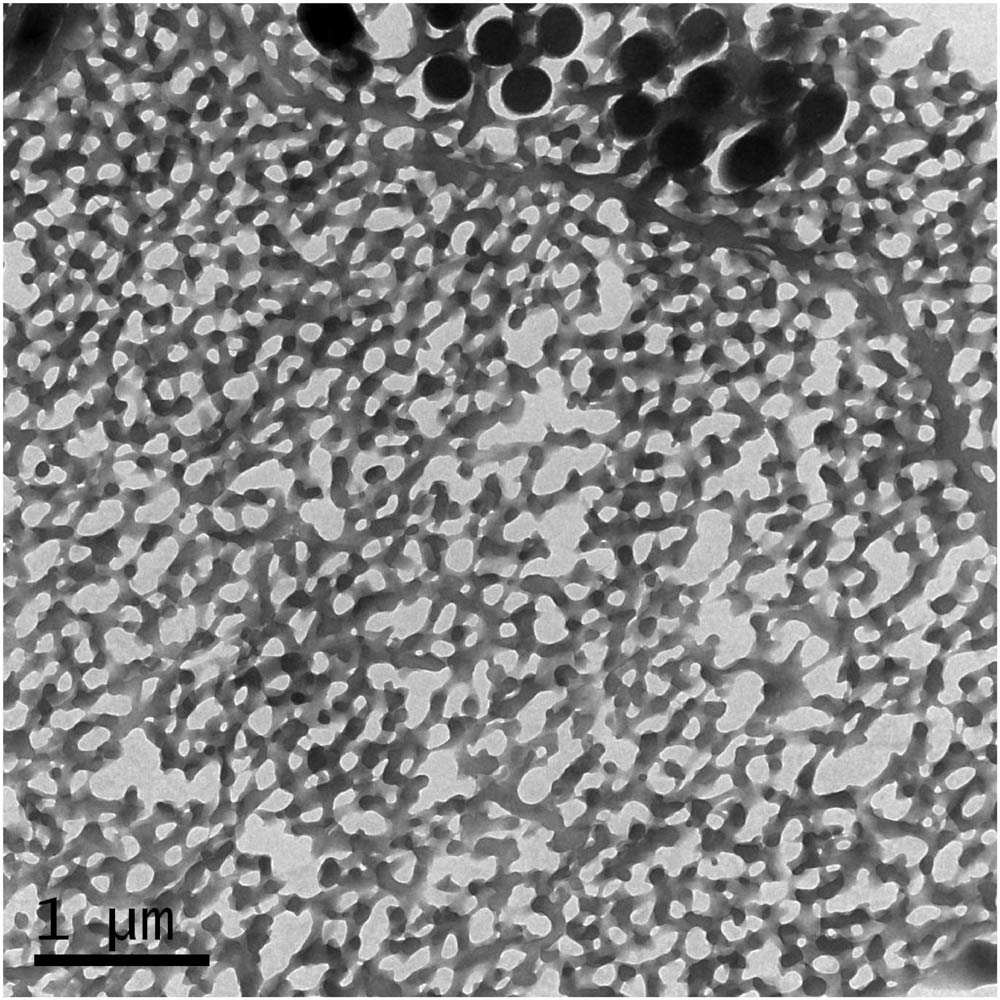 |
|
The spongy nanostructure responsible for the colour in the Jay feather. Left: image produced using scanning probe microscopy. Right: image produced by transmission electron microscopy. |
|
The researchers found that the Jay is able to demonstrate amazing control over the size of the holes in this sponge-like structure and fix them at very particular sizes, determining the colour that we see reflected from the feather. When light hits the feather the size of these holes determines how the light is scattered and the colour that is reflected. As a result, larger holes mean a broader wavelength reflectance of light, which creates the colour white, and smaller holes with a more compact structure, result in the colour blue.
If the colours were formed using pigments created from the bird’s diet, the feather colour would fade over time. However, since nature has developed a way to create the colours through structural changes, any nanostructure will remain intact, explaining why birds never go grey as they age. In contrast, humans rely on pigments to colour hair. As these are not produced to the same extent as we age, we consequently go grey.
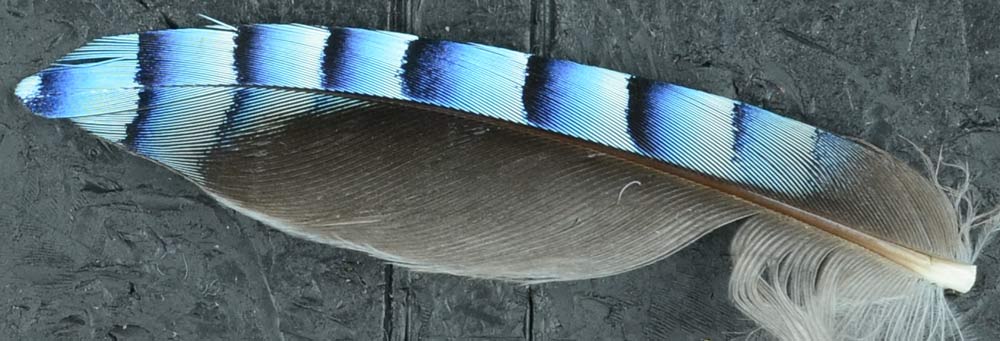 |
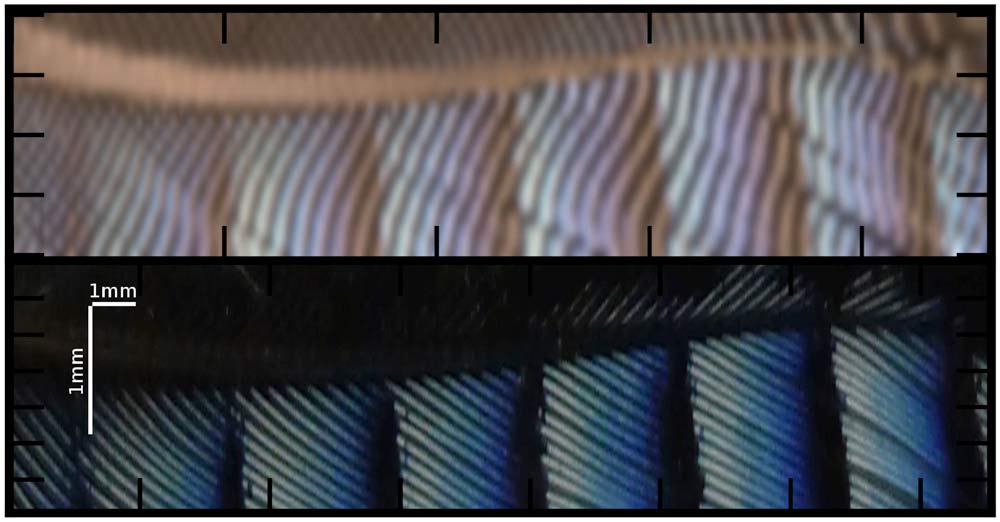 |
|
Image of the Jay feather. Right: scanned to examine the nanostructure due to the colour. The colour in the top half of the image is derived from the structure. |
|
Dr Andrew Parnell, from the University of Sheffield’s Department of Physics and Astronomy said: “Conventional thought was that to control light using materials in this way we would need ultra-precise and controlled structures with many different processing stages, but if nature can assemble this material ‘on the wing’, then we should be able to do it synthetically too.”
Dr Parnell added: “This discovery means that in the future, we could create long-lasting coloured coatings and materials synthetically. We have discovered it is the way in which it is formed and the control of this evolving nanostructure – by adjusting the size and density of the holes in the spongy like structure – that determines what colour is reflected. Current technology cannot make colour with this level of control and precision – we still use dyes and pigments. Now we’ve learnt how nature accomplishes it, we can start to develop new materials such as clothes or paints using these nanostructuring approaches. It would potentially mean that if we created a red jumper using this method, it would retain its colour and never fade in the wash.”
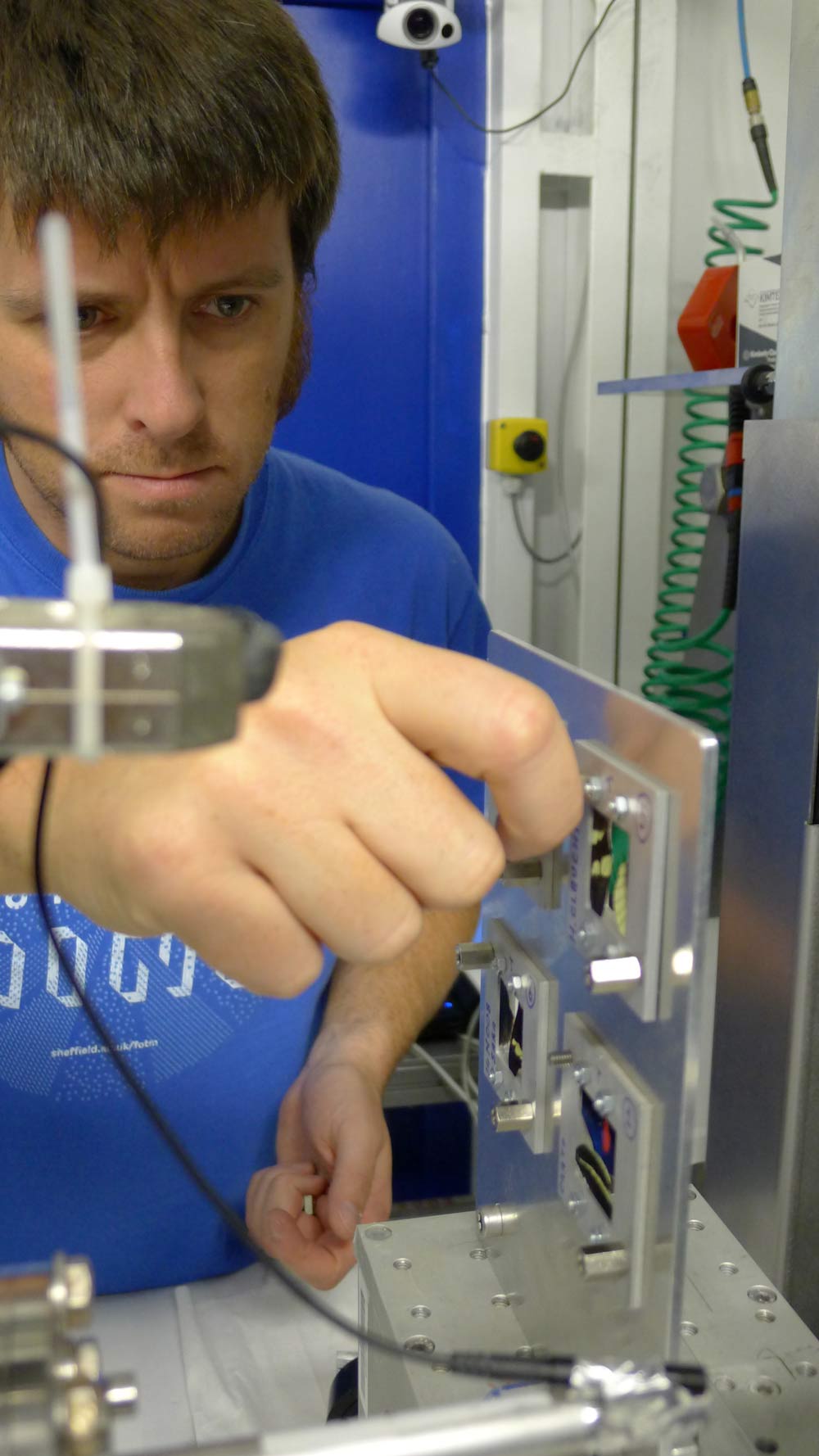 |
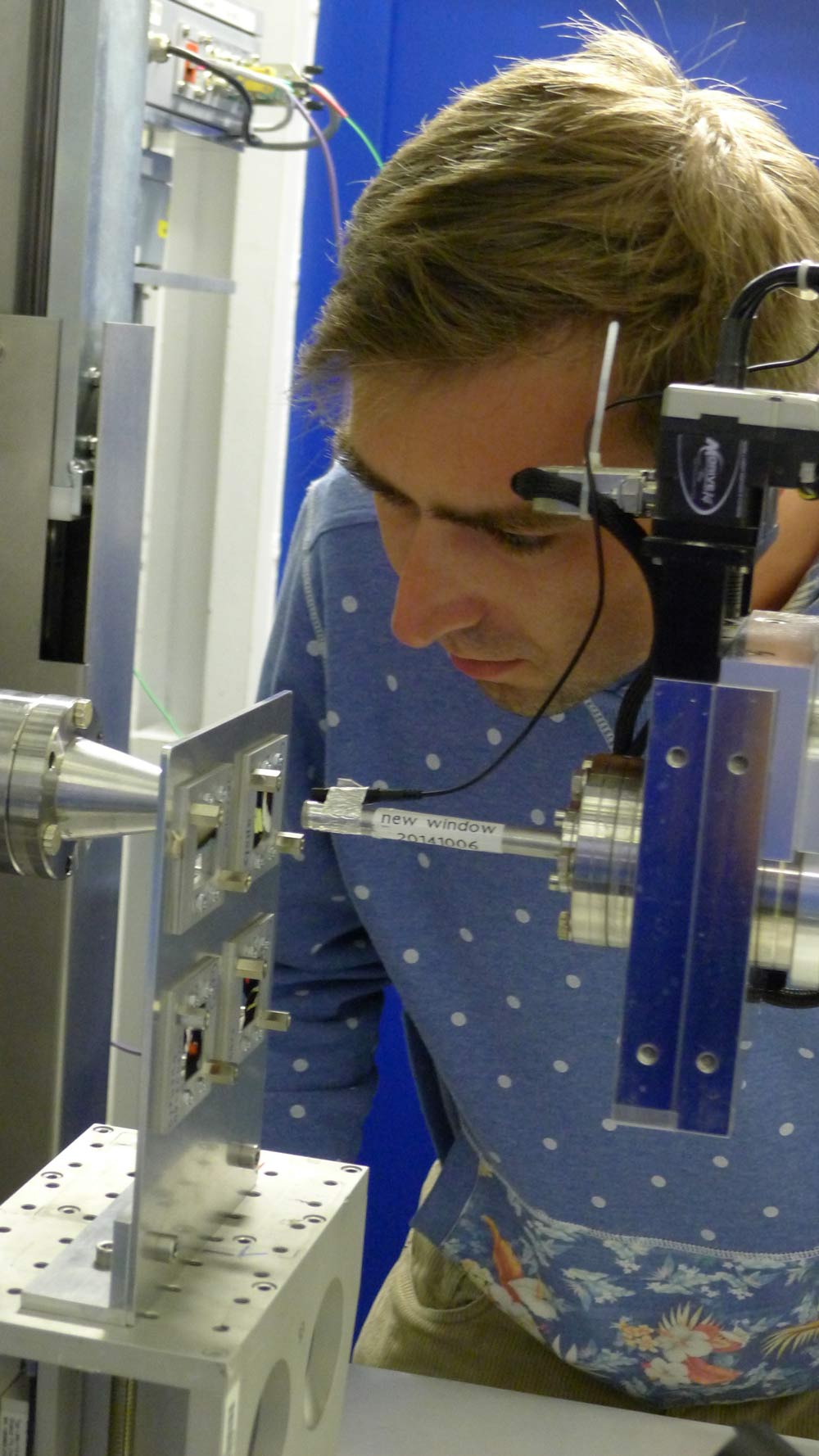 |
|
Dr Andrew Parnell aligns samples on the ESRF's ID02 beamline. |
Dr Andrew Dennison examines the set-up on ID02. |
The team from Sheffield University is working with AkzoNobel to make synthetic materials based on the design rules discovered from the natural world, on a grant funded by innovate UK.
Dr Daragh McLoughlin, researcher at AkzoNobel Decorative Paints Material Science Research Team added: “This exciting new insight may help us to find new ways of making paints that stay brighter and fresher-looking for longer, while also having a lower carbon footprint.”
For Dr Adam Washington from the University of Sheffield: “The research also answers the longstanding conundrum of why non-iridescent structural greens are rare in nature. This is because to create the colour green, a very complex and narrow wavelength is needed, something that is hard to produce by manipulating this tuneable spongy structures. As a result, nature’s way to get round this and create the colour green – an obvious camouflage colour – is to mix the structural blue like that of the Jay with a yellow pigment that absorbs some of the blue colour.”
To conclude, Sylvain Prevost, scientist on the ID02 beamline, said: “I am very pleased that, once again, synchrotron radiation techniques, in particular the non-destructive study of matter in the nanoscopic scale with small angle X-ray scattering (SAXS), has allowed us to clarify some of Nature's mysteries. This experiment illustrates the unique characteristics of the ESRF's ID02 beamline and the very high flux instrument resulting from the recent upgrade. The new ID02 beamline offers unprecedented access to dimensions covering from interatomic distances to micrometres (0.2-5 000 nm). In this particular experiment, the unique length of the ID02 instrument, with the sample placed 30 m from the detector, gave us access to larger dimensions around the micrometre range, and enabled us to better understand the mechanisms involved in interactions with visible light.”
References
Spatially modulated structural colour in bird feathers, Andrew J. Parnell, Adam L. Washington, Oleksandr O. Mykhaylyk, Christopher J. Hill, Antonino Bianco, Stephanie L. Burg, Andrew J. C. Dennison, Mary Snape, Ashley J. Cadby, Andrew Smith, Sylvain Prevost, David M. Whittaker, Richard A. L. Jones, J. Patrick, A. Fairclough & Andrew R. Parker, Scientific Reports 5, 18317 (2015); doi: 10.1038/srep18317.
Text by Kirstin Colvin
Top image: Jays are the most colourful members of the crow family. Credit: Ron Marshall.



